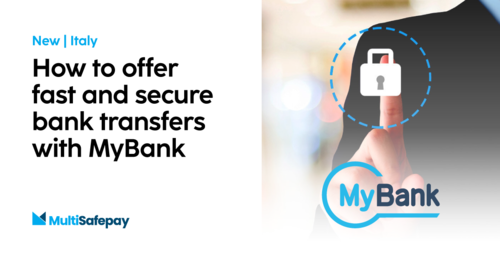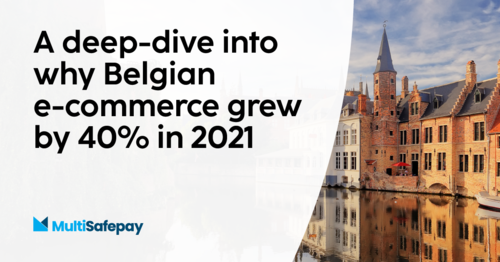How MultiSafepay supports local payment methods and local currencies
Cross-border ecommerce is popular in Europe. In 2021, 30% of European online shoppers purchased from sellers in other EU countries.1
Online tools make it easier for merchants to connect with customers globally, and more and more businesses are selling overseas. Though expansion itself is an easy process, each market presents its own nuances that require trusted local experience to navigate. There are a few steps merchants should keep in mind about each market, including both technical and non-technical aspects.
The goal of a united European market
International expansions require management of operational, regulatory, and tax considerations. The good news for merchants is that technological, market, and regulatory developments are increasingly reducing barriers to sales across Europe. With the Revised Payment Services Directive (PSD2) comes the decentralization of financial services that follow the goal of a single European market.
Security regulations such as Strong Customer Authentication (SCA) aim to facilitate the EU's goal of creating a single competitive European market while reducing fraud and increasing the security of online payments within the EU.
The value-added tax (VAT) regulations modernized in 2021 further strengthen the internal European market, harmonize cross-border transaction rules and ensure fair competition with non-European traders. The tax rate is charged in the EU member state the customer is based in, regardless of the trader's location.
How MultiSafepay supports cross-border sales
1. Local payment methods
How online shoppers prefer to pay drastically depends on their location. Inhabitants of different European countries show different behaviors and mentalities when it comes to online shopping - and they also have different online payment methods they prefer to use.
If you don't create a familiar and trustworthy payment experience, you risk cutting off entire countries from your addressable market list. For example, in the Netherlands, 90% of online customers used iDEAL as their payment method in 2020. In Belgium, the local payment method Bancontact takes up two-thirds of online payments. While in Germany, buy now, pay later (BNPL) options such as Klarna are particularly popular, credit cards are still the dominant payment method in Spain and Italy.
For merchants wanting to sell in other European countries, it is crucial to understand the underlying payments culture of the market you want to operate in.
2. Different currencies
Trust issues can lead to shopping cart abandonment. An essential way to increase trust is to localize and translate your shop, talk to your customers in their language - and offer them to pay in their local currency. While paying in Euro is the standard in most European countries, there are still some exemptions, such as Sweden, Switzerland, and Denmark, not to mention the UK or other currencies. It’s best to work with a payment integration that automatically supports a broad range of currencies that you can easily accept and convert in payouts without any complications for you and your customers. Display the cost of each item in local currency by using Multi-Currency tools and make sure your website can provide that information automatically for foreign users.
3. Expertise and market insights
Did you know that integrating voice assistant technology into ecommerce sites is particularly popular in Spain?2 Or that France has strict regulations governing retail discounting periods and sales, which are typically allowed twice a year, known as les soldes?3
Besides developing products and solutions based on our market insights, we know that even insights that appear minor can give you an edge over your competitors and be an important route to cracking a new market.
MultiSafepay has teams in different European markets and has cooperated with a diverse spectrum of European merchants and partners for many years. Our dedicated sales teams and multilingual integration and customer support are happy to help you identify which strategies and payment methods will offer the most value for your business and help you reach customers in the market you want to operate in.
Want to get more insights?
If you are interested in getting more unique insights and learning more about expanding your commerce operations into new markets, download our complete guide to European expansion.



